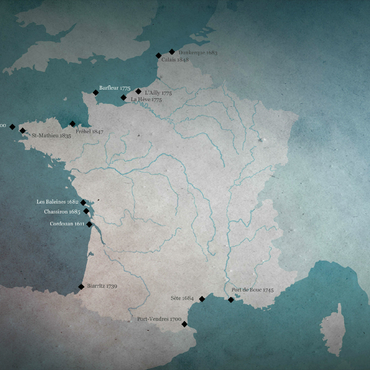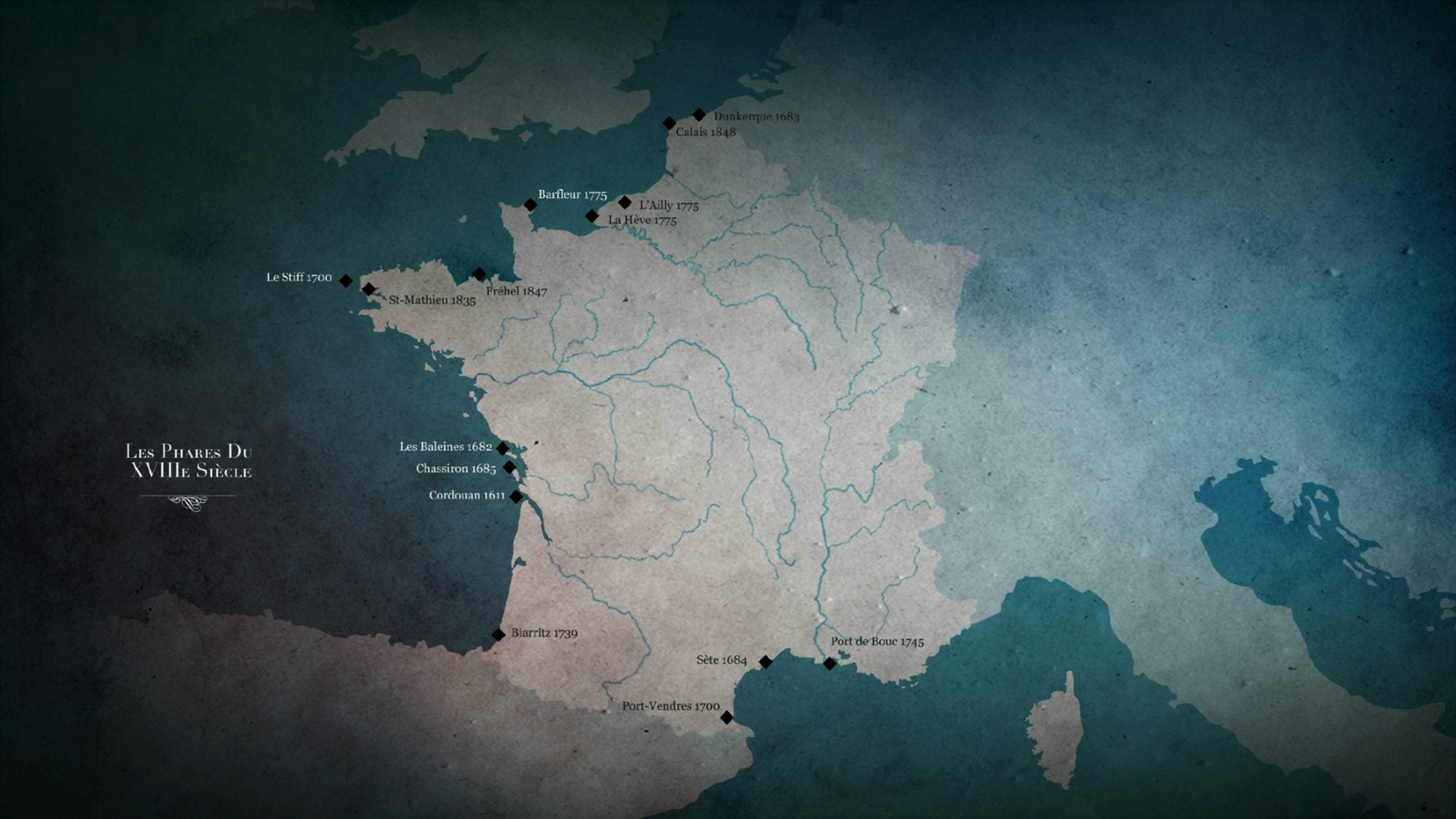
- Home
- Fresnel’s laboratory
- Lighthouses become a national project
- France's lighthouses at the end of the Ancien Régime
Thanks to admiral Antoine Thévenard, we have an inventory of all the illuminated lighthouses that existed in the late eighteenth century – there were one hundred and thirty, nearly all of them in Europe. The shores of the kingdoms of Denmark and Sweden had begun to be lit. But with fifty-four lighthouses by 1800, the English coasts were by far the best lit in the world. Despite the international renown of Cordouan,France's fifteen lighthouses paled in comparison. The small number of lights at the entrance to ports (Dunkirk, Calais, La Rochelle, Biarritz, Port-Vendres, Sète and Port de Bouc), the towers built by Vauban (Fréhel, Le Stiff, Oléron, les Baleines), other erected by the Rouen chamber of commerce (L'Ailly, La Hève, Barfleur), and the light at the Abbaye Saint-Mathieu could not compete with the density of lights along the coasts of England. In September 1792, the Navy was given responsibility for all lighthouses, daymarks and markers. Light dues were eliminated, as they had been in America. Coastal lighting became a free public good, which represented a fundamental break in how it had previously been funded and managed. In March 1806, an imperial decree transferred lighthouses from the Navy to the Ministry of the Interior, except for those at Stiff and at Saint-Mathieu. Engineers from Ponts et Chaussées took matters in hand, and launched a wide-ranging survey of the lighthouse network – structural conditions, oil supply, regularity of lighting, etc. The Ponts et Chaussées engineering corps had been created in 1716 and endowed with a school in 1747. Under the Revolution and Empire, the corps' scope of activities – which had hitherto been land-based – was extended to include maritime works as well.





